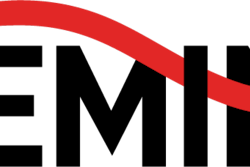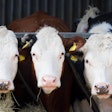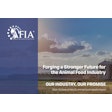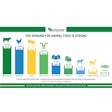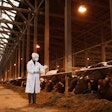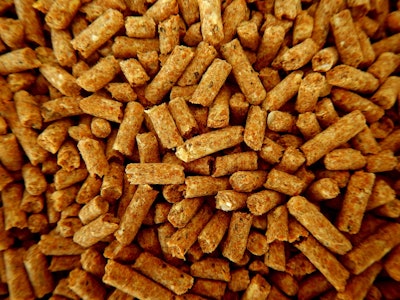
For over 40 years, formaldehyde has been a critical component in animal feed production, leveraged for its efficiency in controlling harmful pathogens such as salmonella and E. coli 1. This colorless, flammable gas, well-known for its use in industrial products and as a preservative in medical laboratories and consumer products, plays a vital role in ensuring food safety within the animal feed sector. Although formaldehyde in food and feed may raise concerns about exposure, it's essential to recognize the distinction between its controlled use in manufacturing and unintended exposure scenarios.
Exposure to formaldehyde can lead to irritation of the eyes, nose, and throat, as well as more severe health issues with long-term exposure, including an increased risk of cancer and respiratory problems. Despite these risks, the ingestion of small amounts of formaldehyde is not likely to cause acute effects, highlighting the importance of adhering to safe levels of exposure, particularly in food and feed preservatives. This underscores the critical balance the industry must maintain between utilizing formaldehyde for its preservative benefits and ensuring safety and regulatory compliance to protect both animal and human health.
What is formaldehyde?
Formaldehyde is a naturally occurring chemical found both in the environment and within living organisms, including humans, where it plays various roles. It's present in modest amounts in everyday foods like fruits, vegetables, meats, and milk, with concentrations documented as high as 58.3 ppm in fruits and 40.6 ppm in vegetables. Beyond its dietary presence, formaldehyde is also produced internally in humans and other organisms as a part of vital biological processes, including metabolism and amino acid synthesis. Notably, it emerges as a natural byproduct of trimethylamine oxide (TMAO) breakdown in certain seafood, illustrating its intrinsic role in biological functions.
Beyond its natural occurrences, formaldehyde has substantial industrial and commercial applications. It's integral to producing diverse products like fertilizers, paper, plywood, and urea-formaldehyde resins, underscoring its significance across various manufacturing industries. Additionally, it's used as a preservative in some foods and a wide range of household products, including antiseptics, medicines, and cosmetics, demonstrating its extensive utility.
Uses of formaldehyde in animal feed
Formaldehyde's multifaceted role in animal feed manufacturing underscores its critical importance in ensuring feed safety and quality:
Antimicrobial properties:
- Primarily utilized for its antimicrobial capabilities, formaldehyde effectively combats pathogens like Salmonella in feed, ensuring a safer food supply chain.
- Its application extends to fishmeal and corn, where it's used under mild conditions without compromising the availability of essential nutrients such as lysine.
Application and efficacy:
- Products like Termin-8, containing formaldehyde, offer protection against Salmonella for up to 21 days post-application, safeguarding feed during processing and against potential recontamination.
- Not only does formaldehyde maintain a salmonella-negative status in feeds and ingredients for up to three weeks, but it also plays a pivotal role in preventing post-processing contamination from pathogens such as E. coli.
Formaldehyde's role in feed manufacturing extends beyond its antimicrobial properties, contributing significantly to animal health and operational efficiency.
Improvement in feed quality and animal health:
- By preventing viruses and bacteria like Salmonella and E. coli from contaminating feed, formaldehyde plays a crucial role in maintaining the health of livestock and preventing diseases from entering the food chain.
- The application of formaldehyde in feed reduces enteritis in poultry production, which leads to improved flock uniformity, maintained egg weights and quality in layers, and decreased veterinary costs and mortality. These benefits collectively enhance the profitability of poultry farming.
Enhancement of feed processing and safety:
- Formaldehyde's ability to form methylene bridges and cross-link proteins not only improves the elasticity of wool but also enhances the durability and shelf-life of feed by decreasing water sensitivity and increasing resistance to chemical and enzyme exposure.
- Understanding the microbial ecology of feed mills and utilizing next-generation sequencing (NGS) technologies can help in tracking Salmonella and managing general microbial contamination in feed processing. This approach ensures a safer feed by identifying core microbial populations that might affect feed safety.
- These benefits underscore formaldehyde's indispensable role in feed manufacturing, optimizing livestock production while ensuring food safety.
Regulatory oversight and safety concerns
Worldwide regulatory bodies present diverse approaches to the use of formaldehyde in animal feed, reflecting the varied concerns over safety and regulation. The EU Commission has not reauthorized formaldehyde as a feed additive, promoting formic acid as the primary feed hygiene enhancer in Europe. In sharp contrast, Hong Kong completely prohibits formaldehyde in food, indicating a rigorous safety stance. The U.S., however, manages its use under FDA's Title 21 of the CFR, allowing it with specific tolerances and an acceptable daily intake of 0.1 ppm, demonstrating a more permissive but regulated approach.
Health and environmental worries stem from formaldehyde's recognition as a carcinogen by inhalation, with associated risks like respiratory problems and reproductive toxicity. The EPA's draft risk evaluation on formaldehyde use in feed manufacturing reflects these concerns. Despite this, organizations like the AFIA argue against the EPA's restrictive efforts, seeking a balance that safeguards human health while ensuring industry effectiveness.
The FDA regulates formaldehyde through the New Animal Drug Application (NADA) process and OSHA sets workplace exposure standards, illustrating the complex regulatory landscape it falls under. Industry entities like the AFIA and the American Chemistry Council (ACC) resist strict regulations, concerned about negative impacts on the feed industry's ability to manage viral threats and uphold food safety.
Industry Responses and Alternatives
The industry has been actively exploring and adopting alternatives to formaldehyde in response to safety and regulatory concerns, while also advocating for the continued use of proven effective solutions. One such alternative is formic acid, notably Amasil from BASF, which serves as a potent feed acidifier. It's especially beneficial in controlling pathogens like salmonella in animal feed, thus ensuring feed hygiene without raising safety issues. This is particularly advantageous for young animals like piglets, enhancing feed digestibility and overall vitality during crucial developmental stages.
The American Feed Industry Association (AFIA) is advocating against restrictions on formaldehyde use, underscoring its critical role in upholding food safety standards. Meanwhile, companies like Kemin Industries are innovating with both formaldehyde-based and alternative solutions for salmonella control in feed, demonstrating the industry’s commitment to safe and effective feed preservation methods. These efforts exemplify the sector's proactive stance in balancing safety concerns with the necessity of maintaining high-quality, safe animal feed production.
The exploration of alternatives like formic acid and the industry's initiatives in advocating for the responsible use of formaldehyde reflect a proactive stance towards evolving safety standards and regulatory frameworks. These efforts reinforce the sector's dedication to sustaining high-quality feed manufacturing processes, underscoring the broader implications for food safety and public health. As we look toward the future, it is evident that continued research, regulatory alignment, and industry innovation will be critical in shaping the trajectory of feed manufacturing practices, ensuring the wellbeing of both livestock and consumers alike.
.jpg?auto=format%2Ccompress&crop=faces&fit=crop&h=48&q=70&w=48)

